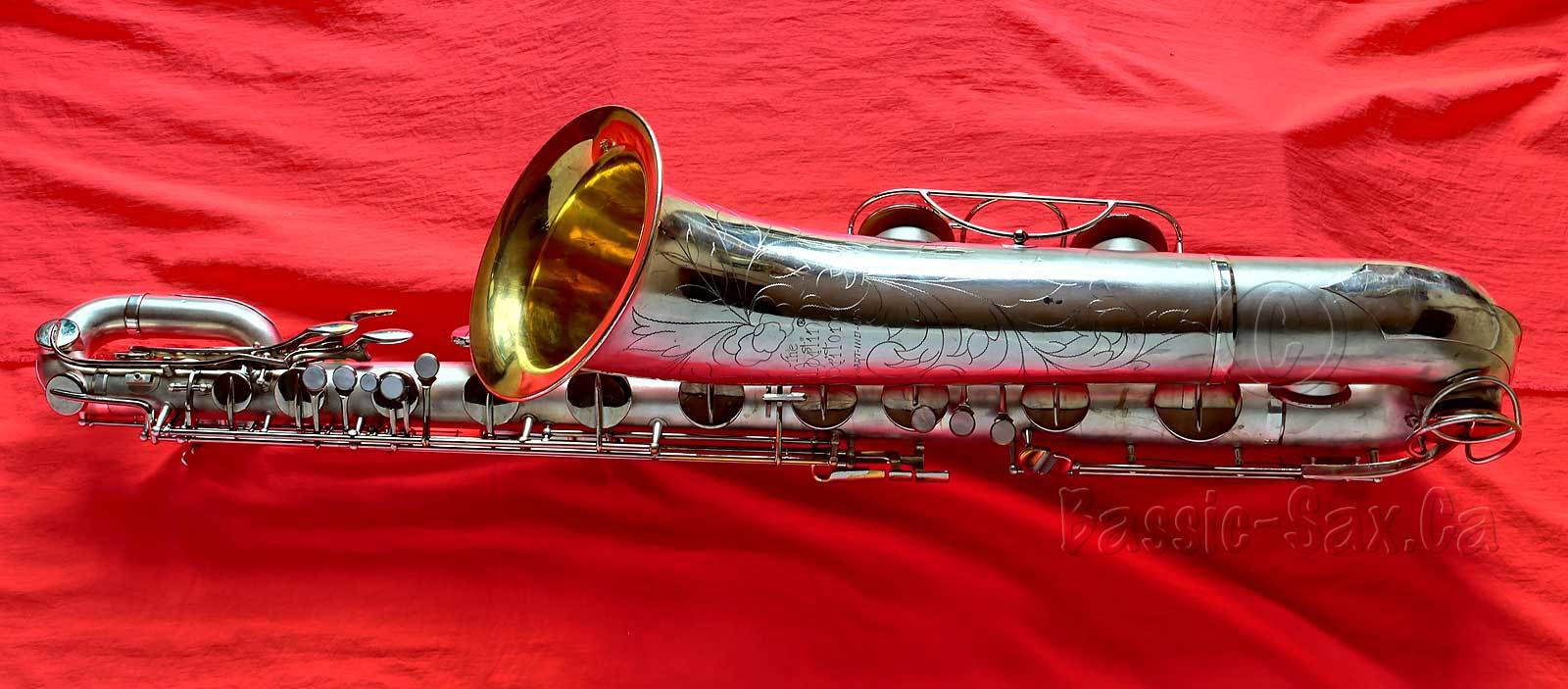The other day I found out about the Heavy Mass Saxophone Neck Screw, which is the brainchild of Meridian Winds.
According to their Facebook page, this product:
- “provides tonal character and color for some discerning artists”,
- “[is] available to fit all brands of saxophones, in Raw Brass, Silver Plated and Gold Plated versions”, and
- is handcrafted in Okemos, MI.
Despite the company showing these lovelies in all kinds of slightly-out-of-focus-detail, Meridian Winds is a bit short on details as to what their Heavy Mass Saxophone Neck Screw is supposed to do exactly. They do however, provide us with this shot of an informational card….
Again, it doesn’t provide us with any real details about the product’s supposed end result. Interestingly enough though, the company’s catch phrase, “The best place to take a leak”, is certainly familiar. It’s been the Saxgourmet’s catch phrase for at least as long as I’ve been aware (since 2000).
Similarity to Steve Goodson’s catch phrase aside, adding weight to specific parts—nodes if you will—of the saxophone is not a new idea. As a matter of fact, years ago Steve Goodson designed a neck with nodal weights to increase mass at some pressure nodes that occur within the neck. This is supposed to improve the sound of certain notes that are otherwise dead—such as D2.
If you’re familiar with Cannonball saxophones, then you’re likely familiar with the semi-precious stones that they utilize for “enhanced resonance”.
Source: 2saxy4u on eBay.com
Not only does Cannonball utilize these semi-precious stones on the neck, but also on the keys. The implication is that even the use of these semi-precious stone on the key touches changes the horn’s resonance:
The Stone Series® is adorned with semi-precious stones. These beautiful stones give the instrument a striking look, as well as changing the way the instrument resonates.
Source: cannonballmusic.com
So is all this stuff true, or is it just snake oil? I’m certainly not an expert, but I can tell you that I’ve played a lovely Cannonball Stone Series Mad Meg tenor that belongs to a colleague of mine, and it is very close in resonance and tone to my 1950 Zephyr. However, both he and I prefer my Zeph to his Mad Meg for tone and resonance. Oh, and just to be clear, I haven’t glued any semi-precious stones to my 95% naturally delacquered Zephyr. :clown:
The Heavy Mass Saxophone Neck Screw: bling, or serious resonance aid?
I really don’t know what to make of the Heavy Mass Saxophone Neck Screw. If I buy into the nodal theory, then I could see that adding weights to a sax neck in strategic spots could in theory change the resonance of the horn. However, is there a node at the point of the neck screw? I don’t know. :scratch:
Are these things more ergonomic? Perhaps. Some people who have chimed in on the Meridian Winds’ Facebook page certainly claim so.
One thing is for certain, if you like bling, or if you would like your saxophone’s neck screw to match your body piercing, then the Heavy Mass Saxophone Neck Saxophone Neck Screw will likely appeal to you. Note: All images below from Meridian Winds Ergonomic Heavy Mass Saxophone Neck Screw Facebook page.














Stumbled upon another “Mystical Magical Sound Enhancer” in the form of a neck or neck and lyre screws. This time an “Alloyed Silver” material is responsible for “All the notes flow together smoothly with this screw. The high register becomes richer and powerful. You will be surprised to find such a small screw drastically improves your sound and play.” :wtf:
Well, I think it’s safe to conclude SOMETHING Is Getting Screwed! :tongueincheek:
I can think of one quite reproducible use for these screws. If you have something on your horn that buzzes, due to a bad solder joint or slop in the mechanism or whatever, one of these might change the resonant frequency of the area enough to make it stop.
That said, getting the horn fixed would work even better.
+1
The idea of adding weight to the neck is slightly older.
I have a Buescher (1960) with two pieces of brass added on the neck around the area of the A node.
As the main function of such gizmo’s is between the ears I think you will only obtain the max effect when;
you sing the name Coltrane backwards for each part of the instrument (all 122 parts),
in unisono with an older saxophone player with a saxophone shoulder.
And burning candles and incense is always a good idea.
Snake Oil? You are just too kind.
I’m trying to remember a quote. Something like “A ______ and his _____ are soon _______.” ? :duh:
But, I guess whatever incentive for “sticking the horn in the piehole and make it make the noise you want” is never money wasted. :2cents:
Still?
I know I’m somewhat guilty in the “ultimate mouthpiece” search, but not in the usual direction. I have a Bonacio Custom and 2 Professional, I believe, Rosewood large chambers from the early 1920s. I assume at some point I will have to get a Sigurd Rascher just to see if I’m on the right track, but if I do, that will be my first mpc over $100. I am the son of a Stingy Bastard after all! :loco: